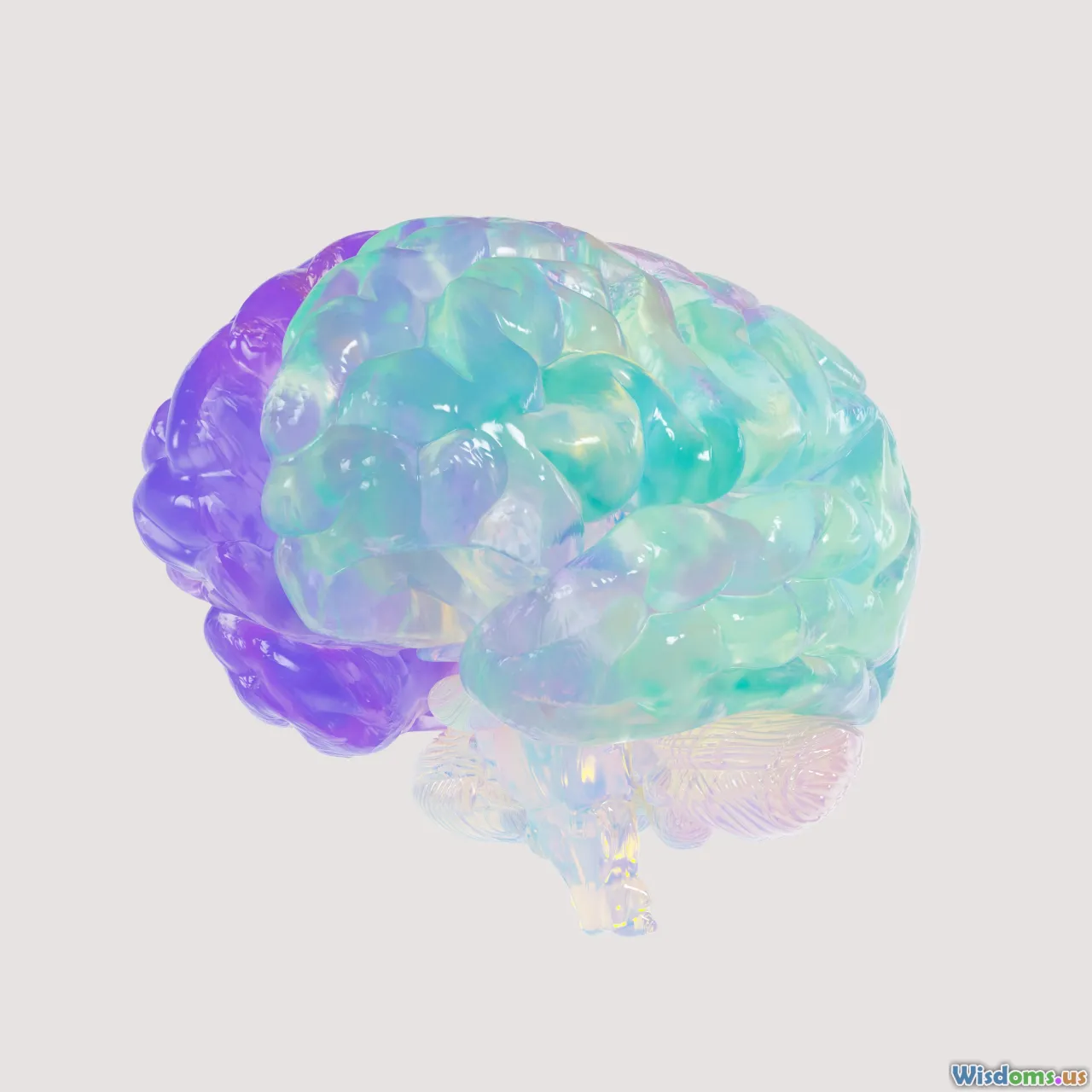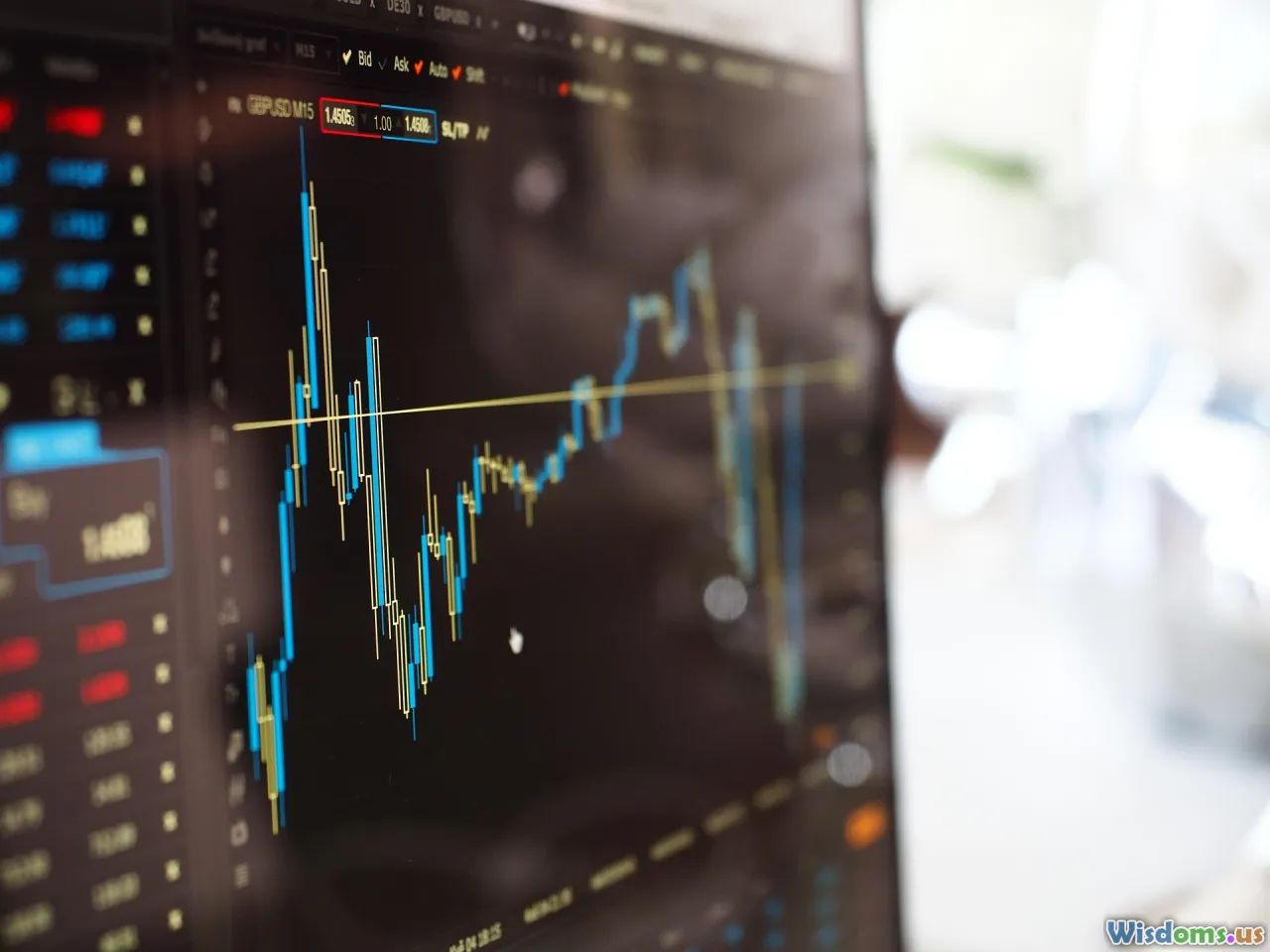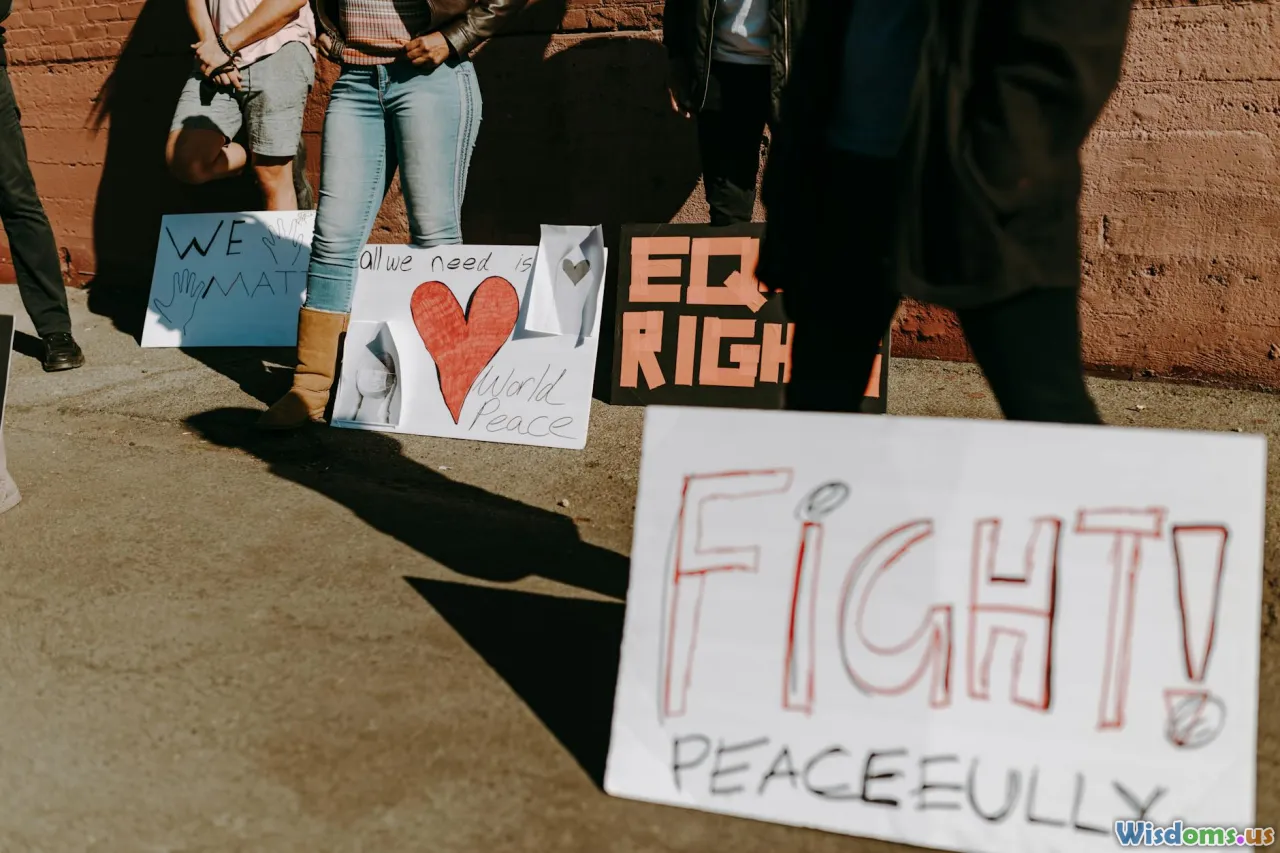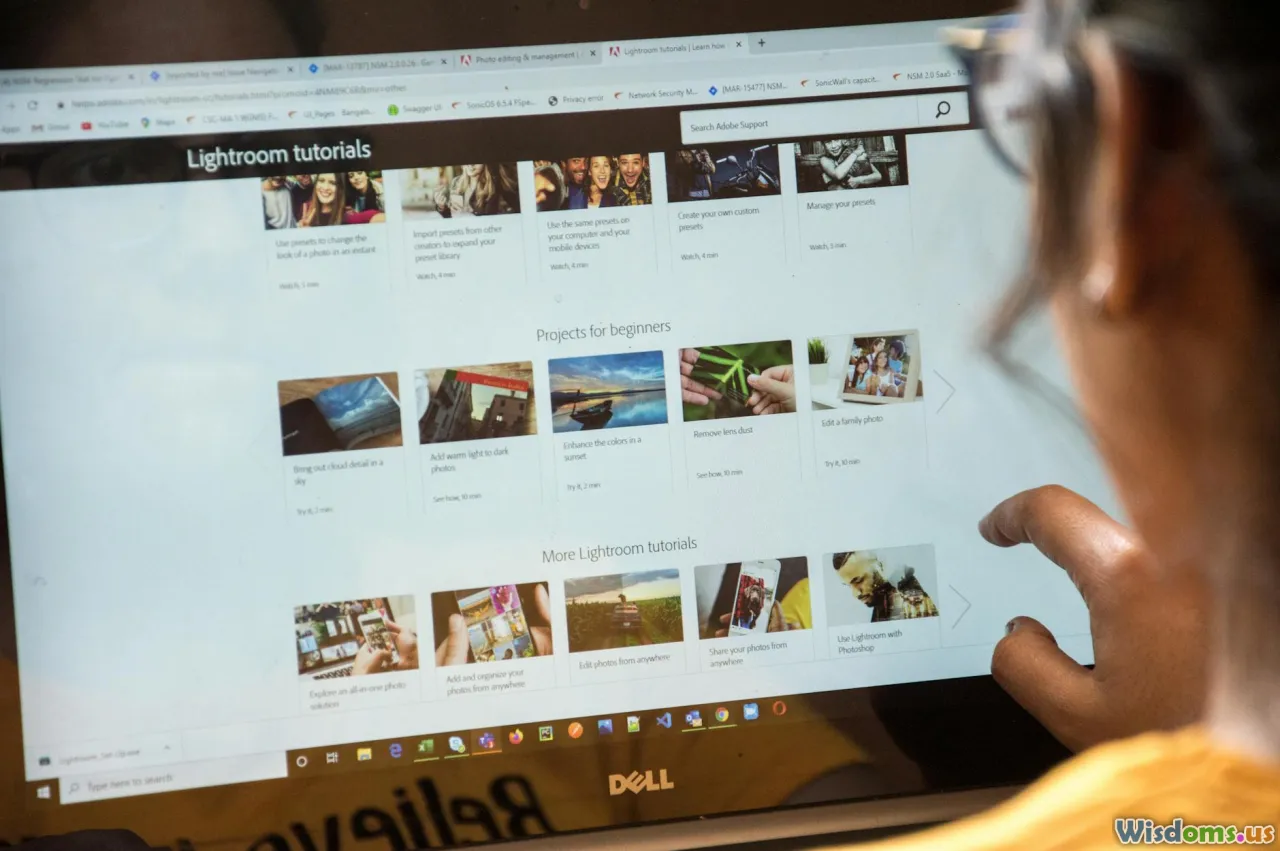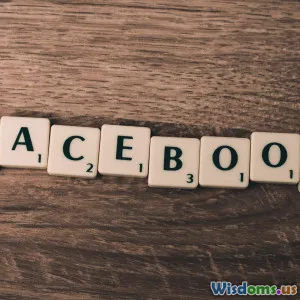
Tracking The Rise Of Conspiracy Theories Online
14 min read Explore how conspiracy theories gain traction online, their influence, and the digital factors fueling their spread. (0 Reviews)
Tracking The Rise Of Conspiracy Theories Online
On any given day, browse your social media feed and you're likely to stumble upon bold claims, secret plots, and sensational headlines. While curiosity and skepticism have always driven humans to question mainstream narratives, today's digital era has amplified that impulse on an unprecedented scale. Conspiracy theories, once fringe or relegated to rumor mills, now captivate millions online, shaping perceptions and, increasingly, real-world events.
Why have these alternative explanations surged in popularity? How do they spiral so quickly and widely? Let's explore the online ecosystem fueling conspiracy theories, dissect the mechanics behind their virality, and examine how digital citizens and platforms can respond constructively.
The Digital Roots of Modern Conspiracy Theories 
The information revolution brought more than access; it democratized voice and audience. Pre-internet, conspiracy theories often simmered in small print publications, radio hamlets, or private meetings. But with the birth of global networks in the late 20th century—Usenet groups, message boards like 4chan, and later platforms like Reddit, YouTube, Facebook, and Twitter—sharing an idea, no matter how outrageous, became frictionless.
For example, the 9/11 attacks led to countless online forums investigating “what really happened,” propelling everything from controlled demolition hypotheses to more outlandish claims. Meanwhile, the COVID-19 pandemic turbocharged online conspiracies, from myths surrounding 5G’s alleged health hazards to vaccine microchips, sometimes resulting in off-platform harm or vaccine hesitancy.
Key digital drivers:
- Ease of Content Publishing: Anyone can author a theory and instantly attract followers globally, no editorial gatekeepers involved.
- Algorithmic Amplification: Platforms reward engagement. Outrageous or sensational content tends to get more clicks, likes, and shares, pushing it further.
- Echo Chambers: Social and recommendation algorithms curate feeds aligned with personal beliefs, reinforcing and insulating conspiratorial views.
Case Study: "Pizzagate" In 2016, an unfounded theory alleging a child trafficking ring in a Washington, D.C. pizzeria spread wildly through Twitter, Reddit, and fringe blogs. Despite thorough debunking, the viral narrative culminated in a real-world incident when an armed individual stormed the pizza shop, convinced of covert activity.
Understanding the Allure: Psychology Meets Technology 
Why are so many susceptible—sometimes regardless of education or background? At the intersection of human psychology and technology, several traits make conspiracy theories sticky:
- Pattern Recognition: Humans instinctively seek patterns and meaning, especially in ambiguous or stressful situations. For some, this thirst for coherence veers into seeing connections where none exist.
- In-group/Out-group Dynamics: Believing “insider” knowledge distinguishes individuals from the “deceived” masses, promising camaraderie and purpose.
- Cognitive Ease: Simple, black-and-white stories are easier to grasp than the messy, often unsatisfying complexity of reality.
- Distrust of Authority: Perceived transparency deficits from governments, media, or corporations make alternative narratives tempting.
Online, these predispositions are continually reinforced by group validation, feedback loops, and charismatic influencers. Take the "Flat Earth" resurgence: despite satellite imagery and irrefutable physics, adherents bond in Facebook groups and YouTube channels, sharing anecdotal evidence and distrusting all contrary sources.
Illustrative Example: During the early months of the pandemic, conspiracy videos touting “miracle cures” and touting global elites' motives racked up millions of views across TikTok and WhatsApp groups. Digital communities driven by anxiety and uncertainty proved fertile ground for viral, unverified claims.
Viral Mechanics: How Conspiracy Theories Spread Online 
Understanding the anatomy of an online conspiracy theory reveals the multifaceted mechanisms driving their reach:
1. Memetic Framing
The best-performing conspiracy content often takes meme form—snappy, easily shareable, emotion-evoking, and visually catchy. A 2021 study from George Washington University highlighted that false COVID-19 claims, repackaged as memes, received over 30% more engagement than textual posts.
2. Influencers and Microcelebrities
On platforms like Instagram, YouTube, and TikTok, personalities gather loyal followings. When these figures endorse conspiracy concepts, their audiences readily accept and reshare the messages. During the "QAnon" movement’s heyday, numerous internet celebrities openly referenced “Q drops,” exponentially growing its audience.
3. Social Proof and Engagement Metrics
Each like, share, and comment compounds believability. The more engagement a post garners, the more credible it seems to casual observers—a subtle but potent psychological effect known as the "bandwagon bias."
4. Network Effects and Cross-Platform Syndication
Rumors bounding from 4chan to Facebook via Twitter or Telegram have a multiplier effect, entering multiple audience spheres simultaneously. Coordinated sharing, sometimes by organized troll groups or disinformation campaigns, magnifies perceived movement size.
Key Tip: To recognize when content is engineered for virality rather than informative value, look for emotional triggers, slick visuals, and exaggerated claims (“This will shock you!” or “What mainstream news won’t tell you!”).
Not All Conspiracies Are Created Equal: A Comparative Framework 
Researchers distinguish between different genres and motivations behind online conspiracy theories:
1. Playful vs. Malign
- Playful: Games or alternate reality roleplay, such as the "Cicada 3301" internet puzzles, may start as cryptic fun but can spiral into serious speculative forums.
- Malign: Targeted campaigns sowing distrust or aimed at destabilizing social cohesion—like state-sponsored disinformation during elections or anti-vaccination crusades.
2. Spontaneous vs. Strategic
- Spontaneous: Born from grassroots speculation, like celebrity death rumors or spontaneous mass hysteria on Reddit.
- Strategic: Carefully orchestrated campaigns, as outlined in the Mueller Report regarding Russia's efforts to influence the 2016 U.S. election via divisive online narratives and bots amplifying conspiratorial content.
This comparative framework aids in risk assessment—identifying which online theories present genuine danger and demand vigorous intervention versus those representing cultural phenomena or harmless speculation.
The Consequences: Beyond the Online Sphere 
Online conspiracy theories increasingly translate into off-screen impacts:
- Public Health: During the pandemic, beliefs in microchips or “plandemic” narratives directly impacted vaccination rates, hospitalizations, and treatment adherence in various countries. The World Health Organization’s "infodemic" task force has referred to false info’s role in undermining health campaigns as a parallel crisis.
- Elections and Democracy: Claims of “rigged” voting systems in the U.S. inspired not only widespread mistrust but culminated in the January 6, 2021, Capitol attack. Similar patterns have appeared globally, from Brazil to Germany.
- Hate and Polarization: The “Great Replacement” theory, a white nationalist conspiracy, moved from fringe forums to mainstream politics and has been cited in several violent attacks.
Concrete Example: In India, rumors spread on WhatsApp about child kidnappers led to a series of mob lynchings based solely on false internet claims—a sobering reminder of digital rumors' alarming real-world potency.
The Frontlines of Fact-Checking and Platform Response 
As damaging stories went viral, tech companies and independent initiatives ramped up intervention:
Automated Detection
Platforms increasingly rely on AI models trained to recognize patterns associated with false or misleading claims. Facebook and Twitter invest in machine learning systems scanning for engagement anomalies, inauthentic content farms, and repeat offenders.
Community Moderation and Flagging
Sites like Reddit employ armies of volunteer moderators who remove conspiratorial or harmful posts. Some Facebook groups now require fact-check citations or warnings before allowing heated debates to continue.
Professional Fact-Check Networks
Organizations such as PolitiFact, Snopes, and Reuters Fact Check work in real time, investigating viral posts and assigning truth ratings. WhatsApp partnered with local fact-checkers globally, encouraging users to forward questionable information for professional verification.
Limitations and Pitfalls
No solution is perfect. False positives (accidentally suppressing legitimate dissent or humor) threaten democratic conversation. Automated filters struggle with sarcasm, coded language, or insider references. Moreover, hardline moderation sometimes fuels claims of censorship—further deepening suspicion among dedicated believers.
Expert Commentary: Claire Wardle, co-founder of First Draft, notes, "Stopping the flow of misinformation isn’t just a technical problem. It’s a civic learning challenge about fostering trust, critical thinking, and open dialogue."
Navigating the Online Maze: Practical Steps for Individuals 
As users rarely pause to vet every post, empowering digital citizens remains crucial. Consider these actionable strategies:
- Pause and Reflect: Before sharing, ask: Where is this information coming from? What evidence supports it? What might the author’s motivations be?
- Use Lateral Reading: Cross-check claims by searching reputable sources. Journalists and fact-checkers rarely trust just one site; adopt their skepticism and breadth.
- Beware Emotional Manipulation: Posts that provoke outrage or shock are often crafted for clicks, not truth.
- Recognize Visual Misinformation: Photos and memes can be doctored; reverse image search tools (e.g., Google Images, TinEye) help confirm authenticity.
- Engage Kindly: For friends or family ensnared by a conspiracy belief, shaming rarely works. Open, respectful discussion that starts with shared values makes productive dialogue more likely.
Educational organizations, like the News Literacy Project, offer free resources targeting students, seniors, and everyone in between—a hopeful sign of grassroots resilience.
The Road Ahead: Balancing Openness and Responsibility 
While conspiracy theories are not new, their rapid online proliferation urgently reframes the debate about digital responsibility. The internet undeniably enhances freedom and access to alternative viewpoints. But as misinformation exacts a greater social and personal toll, both platforms and users face tough choices.
Ongoing Challenges:
- Striking the right balance between free speech and safeguarding truth.
- Developing algorithmic solutions that counteract “rabbit holes” without introducing bias or overreach.
- Supporting cross-sector initiatives—platforms, educators, journalists, and civic groups working together—for holistic resilience.
Ultimately, tracking the rise of conspiracy theories online is about more than monitoring viral trends or naming infamous hoaxes. It's a test of collective awareness and adaptability—a reminder that truth in the digital age is contested, precious, and defended not just by institutions, but by individuals in every click and conversation.
Rate the Post
User Reviews
Popular Posts











